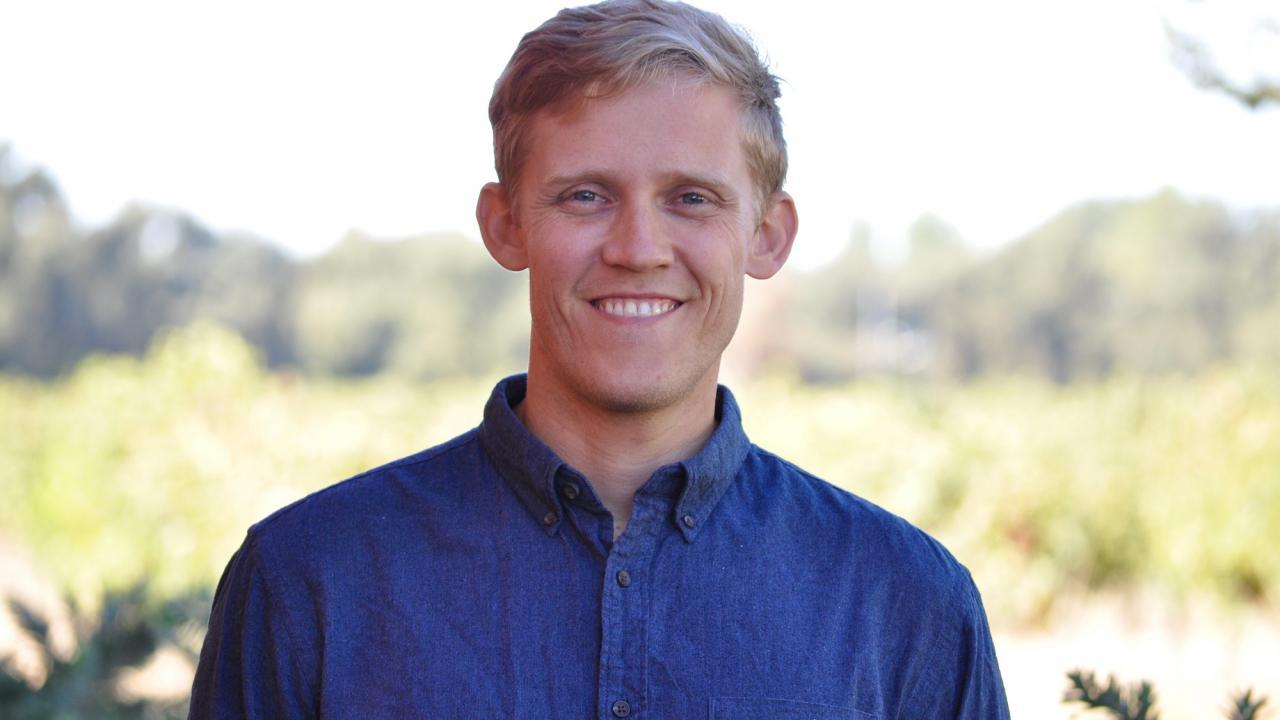
Bringing Big Data to the Vineyard
Big data is all around us –– even in the wine we drink. UC Davis’ Smart Farm Big Idea is tackling how to take some of this vast trove of information and synthesize it for the benefit of agriculture.
Mason Earles, assistant professor in the Department of Viticulture and Enology and the Department of Biological and Agricultural Engineering, is applying big data by merging agricultural and machine learning to glean information that improves vineyards’ health and yields.
“There’s a big difference between data and information,” Earles said. “Data can be overwhelming and confusing, but you can act on information.”
One way Earles is acting on that information is by developing small, lightweight systems that strap onto all-terrain vehicles to estimate yield in real time in vineyards and orchards. And that’s just one example.
Anti-virus protection
Another area of research gaining momentum is in disease prevention –– specifically of leaf reddening in wine grapes. Red grape leaves indicate stress, whether from viral and bacterial pathogens or an imbalance in nutrients or water.
It takes an expert to accurately assess the underlying cause of where a disease originates from within a vineyard –– which Earles said can be critical to the management of the disease by the grower.
“Depending on the disease and its severity, it can create a decision of whether it’s most prudent to rip out entire sections of the vineyard to eradicate the infection,” he said. “However, if we can determine early on it is a nutrient issue, it will dramatically alter the course of action we would take and help make an informed decision.”
Wide application
Earles is also developing a technique based on three-dimensional models to help train machine-learning models. He is working with his colleague Brian Bailey, assistant professor in the department of plant sciences, to create these models inside a computer program, simulate different conditions that could occur in the crop and create synthetic sensor data.
“I think there's a lot of opportunity to develop specific methods that build off the prior knowledge that we have about how plants grow, what things constrain them and how we can build biological knowledge into these state-of-the-art techniques for artificial intelligence,” Earles said.
“There’s a big difference between data and information,” Earles said. “Data can be overwhelming and confusing, but you can act on information.”
Before arriving at UC Davis, Earles worked at Apple as a data scientist and machine learning engineer. He says working with big data has a game-like quality to it.
“It is almost like you are playing a video game,” Earles said. “The real question is, can you go out to a real crop, take a thermal image and use those simulator predictions to make a real prediction on something like photosynthesis, for example.”
Building trust in the field
Earles said one of the major hurdles of applying new technology is establishing trust with farmers and growers –– something that can be challenging to earn yet easy to lose.
“All it takes is your model making some strange recommendations a few times for someone to lose confidence in that model or in that system that you've developed,” he said. “I think part of the future involves making systems that learn from failures and improve in real-time by using feedback from the growers themselves. Their practical knowledge is invaluable.”
Earles is glad to see the interdisciplinary nature of the Smart Farm Big Idea at work. He stressed the importance for people from disciplines who haven't traditionally engaged with agriculture to collaborate around this work.
“We need talented people from areas like computer science, engineering, business and others to accomplish our goals,” Earles said. “We all need to work together to turn raw data into information that can help revolutionize agriculture.”